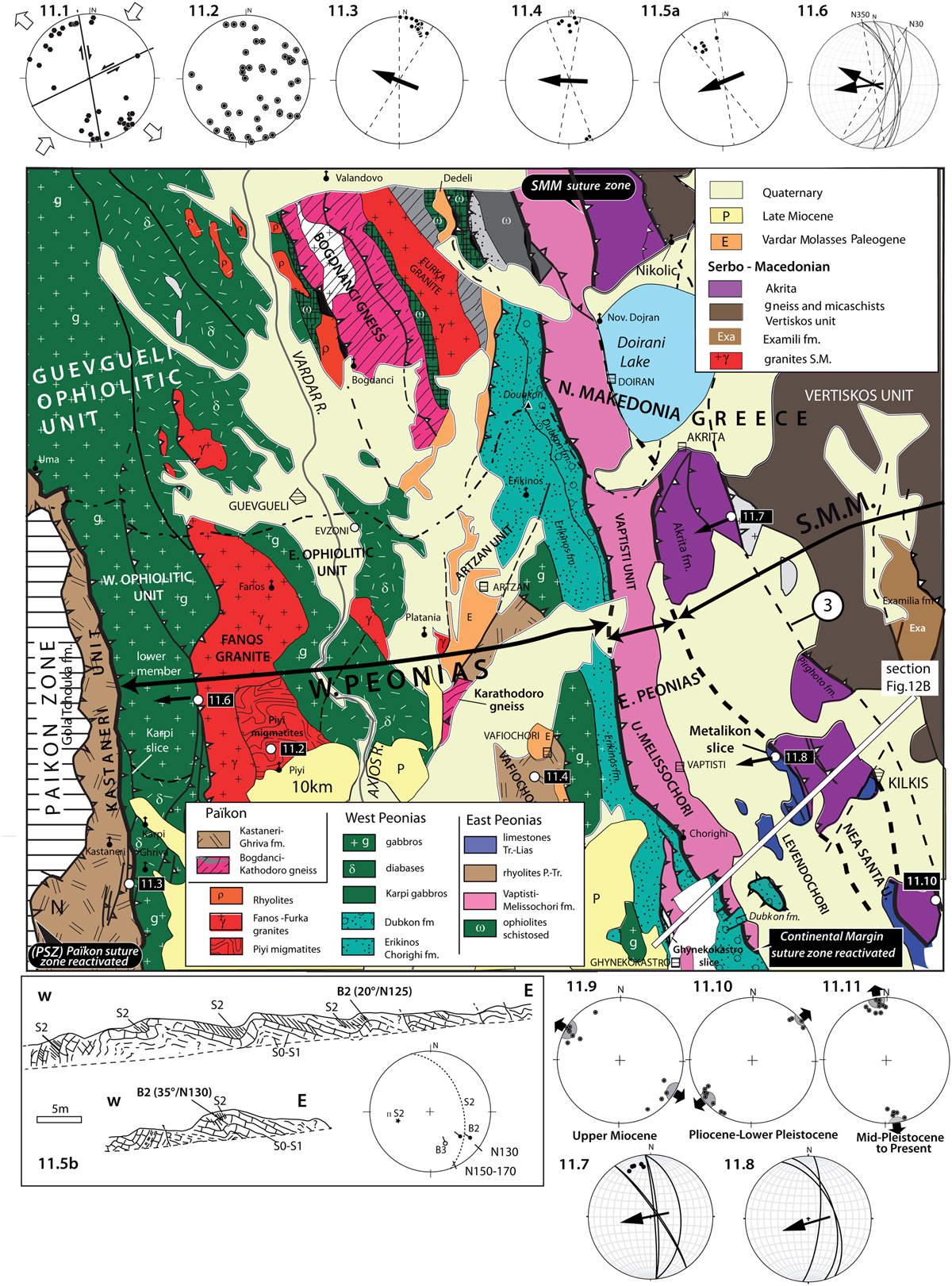Fig. 11

Download original image
Structural sketch of the Western and Eastern Peonias units (north of Thessaloniki). Same symbols as on Fig. 4B; (11.1) poles of dykes of the sheeted dyke complex, after restoring the pillow lavas to an horizontal position (after Bébien and Gagny, 1978); they indicate ≈NNE shortening and ≈WNW lengthening principal strain axes; (11.2) fold axes of the folded and stretched diabase blocks in the Piyi migmatites; they result from a viscous run-off flow (Mercier’s data already published in Bébien’s thesis, 1982); (11.3) poles of similar folds with a western vergence affecting the Ghriva marbles (see Fig. 10.4), below the Guevgueli ophiolitic thrust (D1 event); (11.4) poles of the similar folds in the Vafiochori unit below the ophiolite thrust (D1 event); (11.5a) (B2) folds affecting limestones of the Kastaneri formation, striking N120–130°E with a strain-slip cleavage (D3 event), located south of the Paikon Massif (cross sections on cartoon 11.5b) (north of the Eleftherochorio village, north of pt. 23 on Fig. 8B); (11.6) reverse fault planes, with a western vergence, along the NNW-SSE striking major fault that separates the western unit of the ophiolitic massif from the Fanos Massif; (11.7) reverse faults along the major fault, striking NNW-SSE, with a top-to-the-W vergence that separates the SMM from the Eastern Peonias zone in the area south of the Doirani Lake; (11.8) near Metallikon.
Les statistiques affichées correspondent au cumul d'une part des vues des résumés de l'article et d'autre part des vues et téléchargements de l'article plein-texte (PDF, Full-HTML, ePub... selon les formats disponibles) sur la platefome Vision4Press.
Les statistiques sont disponibles avec un délai de 48 à 96 heures et sont mises à jour quotidiennement en semaine.
Le chargement des statistiques peut être long.




